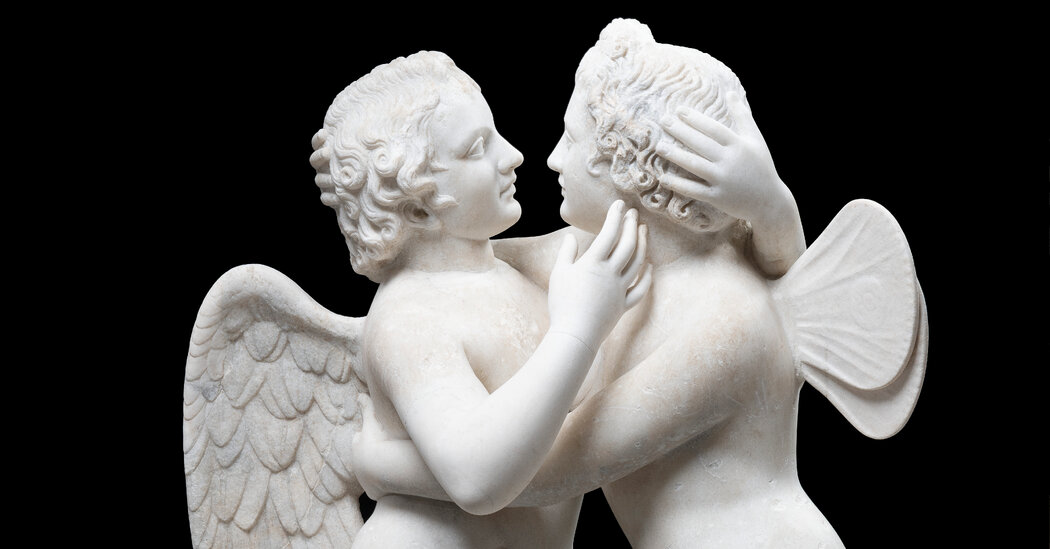Myth and Marble: Ancient Roman Sculpture From the Torlonia Collection
Discover extraordinary artworks showcased through June 29 at the Art Institute of Chicago, with subsequent travels to Fort Worth and Montreal.
A Glimpse into Timeless Sculptures
At the heart of the exhibition are two striking sculptures symbolizing the epochs of Roman artistic achievement: a maiden from the first century B.C. known as the “fanciulla di Vulci” and the crouching goddess Aphrodite. Both figures unveil the intricate balance of human emotion and divine representation, frozen in time yet undeniably present, as noted by art historian Ernst Gombrich, who described them as “real human beings… from a different, better world.”
The Fanciulla di Vulci
The younger figure, identified as the “fanciulla di Vulci,” excavated in the late 1800s, embodies the beauty of the Roman Republic era. Her finely detailed braid and piercing gaze hint at the life and emotion once infused into the stone. Notably, her earlobes were designed to accommodate earrings, indicative of her status and the artistic skill of the time.
Aphrodite: The Goddess in Marble
In contrast, the older figure is the goddess Aphrodite, depicted in a pose evoking both modesty and grace. Her majestic coif and intricate of adornments—including a snake bangle—speak to her importance in both Roman and Greek mythology. Interestingly, while her body originates from the first century A.D., her head was added later during the Renaissance period by artist Pietro Bernini, merging ancient artistry with modern interpretation.
Contrasting Realities: Historic and Modern
The visual juxtaposition of both sculptures reveals their unique stories. The young maiden’s eyes gaze upward, a testament to her past, while Aphrodite’s hones in on the dialogue between antiquity and the Renaissance. The transformation of Aphrodite’s head, sculpted some 1,600 years after her body, highlights the ongoing evolution of art and its interpretations.
The Torlonia Collection: A Rich Heritage
The exhibition showcases 58 significant works from the Torlonia Collection, including over 600 sculptures, including renowned portrait busts of emperors like Hadrian and Marcus Aurelius. This extensive collection has its roots in affluent aristocratic heritage and represents a pinnacle of Roman artistic tradition. The sculptures not only signify their historical significance but also reveal the power dynamics and cultural exchanges of their time.
A Journey Through Time
This collection languished in obscurity for decades, particularly following World War II, when internal disputes prevented its public display. Scholars had little access until recent restoration efforts unveiled these treasures to the world. The current exhibition draws attention to both the masterpieces and the narratives that have shaped them, making these marble sculptures a focal point in discussions about culture and legacy.
Rethinking Roman Identity
The sculptures invite viewers to contemplate significant themes such as power, cultural identity, and artistic evolution. Ancient Rome was characterized by its rich multicultural tapestry, eagerly incorporating influences from conquered territories, exemplifying the quote from Horace about Greece subduing its conqueror through the arts. The collection propels us to rethink Roman identity in the context of cultural interchange, invoking questions about the lasting impacts of artistry across generations.


